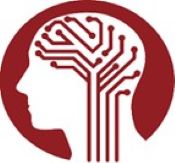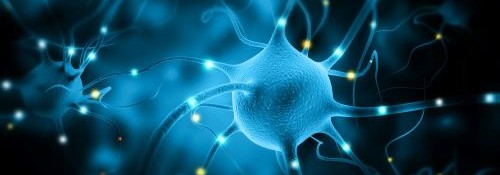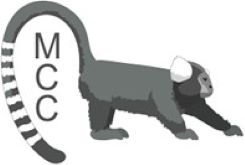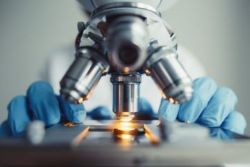NIMH’s Infrastructure Investments: Paving the Road to Discovery
By Gregory Farber on behalf of the Office of Technology Development and Coordination (OTDC)
• 75th Anniversary
For 75 years, NIMH has transformed the understanding and treatment of mental illnesses through basic and clinical research—bringing hope to millions of people. This Director’s Message, guest written by NIMH’s Office of Technology Development and Coordination, is part of an anniversary series celebrating this momentous milestone.
Note: As of October 23, 2023, the Office of Technology Development and Coordination has been replaced by the NIMH Division of Data Science and Technology (DST).
Dan Rather, an American journalist and commentator, once said, “Americans will put up with anything as long as it doesn’t block traffic.” This “unblocking” of traffic is at the heart of infrastructure investment.
People often don’t recognize the importance of infrastructure until it is missing, but it is essential. Take a road, for example. Without maintaining roads, they crack and crumble—and people can’t get where they need to go. In the same way that investing in roads is critical for keeping goods, services, people, and all things moving, investments in the infrastructure of science are critical drivers of discovery.
Nowhere is the importance of infrastructure to science more clearly recognized than in the NIMH Office of Technology Development and Coordination (OTDC). OTDC leads NIMH’s efforts in developing scientific tools, technologies, and approaches for brain and behavioral research that support the institute’s mission to transform the understanding and treatment of mental illnesses through research.

OTDC keeps science moving at speed by managing NIMH’s infrastructure, through which ideas flow, research thrives, and discoveries are made. The NIMH infrastructure portfolio guided by OTDC has three core components that help move forward specific pieces of the research process:
- Informatics (data and information)
- Samples (tissues and specimens)
- Instruments (tools and measures)
These components are necessary roads to the discoveries made by mental health researchers. As NIMH celebrates its 75th Anniversary, we reflect on why each component is so important to our work.
Informatics (data and information)
In OTDC, our largest infrastructure investment is in informatics. Informatics is the road through which data and information are made available to the NIMH research community. OTDC directs this massive data traffic by coordinating and overseeing all NIMH efforts related to establishing and managing data archives; creating and adopting data standards; and developing tools to analyze, visualize, and integrate data.
In the traffic flow of NIMH, data archives provide reliable locations where researchers can store and access data, as required by the NIH Data Management and Sharing Policy , and the fuel that powers secondary data analysis. OTDC manages multiple data archives at NIMH and works with the research community to standardize their format and provide data analysis tools.

The primary archive is the NIMH Data Archive (NDA) , which holds many data types from human research participants. The archive is used not only by NIMH but also by other NIH institutes and programs. Data from more than 1 million research participants are currently available to the research community through the NDA, and more than 4,400 research teams are approved to access the archive to conduct secondary data analysis.
The NDA has helped inform NIMH research priorities. For instance, data in the archive demonstrated that mental health researchers are using many different instruments to collect similar data, making comparisons across studies difficult. Combining forces with other mental health funders, NIMH has embarked on a common data elements initiative to address this issue. The collaborative effort aims to improve mental health research by establishing common metrics to measure mental health data, reducing the current heterogeneity in how clinical and phenotypic data are collected.
NIMH also manages eight large archives with data from specific types of instruments. These include an archive with brain image data and another with cellular neurophysiology data . All are places where researchers can deposit, share, process, and analyze massive amounts of technical data. The archives were created as part of NIH’s Brain Research Through Advancing Innovative Neurotechnologies® Initiative, or The BRAIN Initiative® , which seeks to accelerate the development and application of innovative technologies to improve how we treat, prevent, and cure disorders of the brain.
In addition to providing this data infrastructure, OTDC supports a portfolio of grant awards intended to develop software tools, statistical models, and data standards for analyzing, integrating, and managing mental health and BRAIN Initiative data.
Samples (tissues and specimens)
Along with storing, standardizing, and providing access to data and information, OTDC facilitates the flow of samples critical to NIMH’s research infrastructure. In this role, OTDC eases access to human and nonhuman tissues and specimens that enable many types of mental health research.
OTDC helps support requests for samples made though the NIH NeuroBioBank . The NeuroBioBank is a national resource that provides researchers with human postmortem brain tissue. Developed as an NIH-wide initiative in 2013, the NeuroBioBank has catalyzed scientific discovery by providing a centralized resource of best practices and protocols for collecting, preparing, and sharing brain tissue. It is supported by NIMH, as well as several other NIH institutes.
NIH processes roughly 300 requests submitted to the NeuroBioBank each year and, in turn, distributes thousands of well-characterized, high-quality samples to researchers. The NeuroBioBank also partners with several groups to help people register for brain donation and thereby contribute to future scientific progress. The initiative’s success is exemplified by the recent release of whole genome sequence data from almost 10,000 participants to the biomedical research community.
NIMH also invests in other human tissue repositories, such as the NIMH Repository and Genomics Resource , which provides researchers with DNA, RNA, and cell lines, and the National NeuroAIDS Tissue Consortium , which provides a variety of tissues to researchers studying HIV and AIDS. Although not managed by OTDC, these repositories provide valuable samples and tissues to the research community seeking to understand and treat mental illnesses.

Nonhuman primates are also critical to driving research. A recent report by the National Academies of Sciences, Engineering, and Medicine concluded that, because of their similarities to humans, nonhuman primates are important research models that have contributed to numerous health advances. For instance, the ability to recreate in nonhuman primates the genetic changes seen in humans through such means as genome editing is generating new opportunities for modeling and, one day treating, human neurodevelopmental conditions.

The marmoset has emerged as an important nonhuman research model because of its genetic tractability, meaning its genetic makeup can be readily modified. OTDC helps meet the demand for its use by managing four marmoset breeding colonies and a coordinating center where researchers can request specimens and receive information and support to enhance their research. The colonies and coordinating center are part of the Marmoset Coordinating Center , a multiorganizational initiative established by NIH in 2020 and with funding from NIMH as a national resource to provide primate specimens and coordinate information sharing in biomedical research.
Instruments (tools and measures)

NIMH’s third major infrastructure investment is in instrumentation. Instruments are a key piece of the research process. They are the tools and measures used to collect, quantify, and analyze data, including microscopes, biomedical imagers like ultrasounds, and so forth. The instruments researchers use can significantly affect the quality, accuracy, and reliability of their data and, ultimately, their findings. Through OTDC, NIMH helps keep the roads of science open by making it easier for researchers to access and afford tools to collect their data.
NIMH has published a funding opportunity for the shared instrumentation program , which allows NIH-funded researchers to improve the instruments that power their work. NIMH also participates in another funding opportunity to make specialized instruments available to the NIMH research community.

Both funding opportunities focus on providing groups of researchers with expensive, commercially available instruments, such as optical microscopes, CT scanners, and DNA sequencers. We encourage researchers to take advantage of these valuable funding opportunities.
You can’t get where you’re going without the roads that allow traffic to move quickly and smoothly. OTDC provides that infrastructure for the NIMH research community. Together, the infrastructure programs led by OTDC contribute to NIMH’s mission of transforming the understanding and treatment of mental illnesses by providing roads through which informatics, samples, and instrumentation can flow. For the past 75 years, NIMH has helped researchers access, use, and share tools and resources powering mental health discovery and will continue to pave the way for future advances to come.

